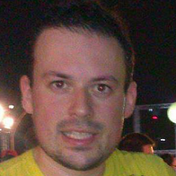Diego Pacheco

Diego Pacheco
Brazilian, Software Architect, SWE(Java, Scala, Rust, Go) SOA & DevOps expert, Author. Working with EKS/K8S. diegopacheco.github.io (Opinions on my own)

Brazilian, Software Architect, SWE(Java, Scala, Rust, Go) SOA & DevOps expert, Author. Working with EKS/K8S. diegopacheco.github.io (Opinions on my own)